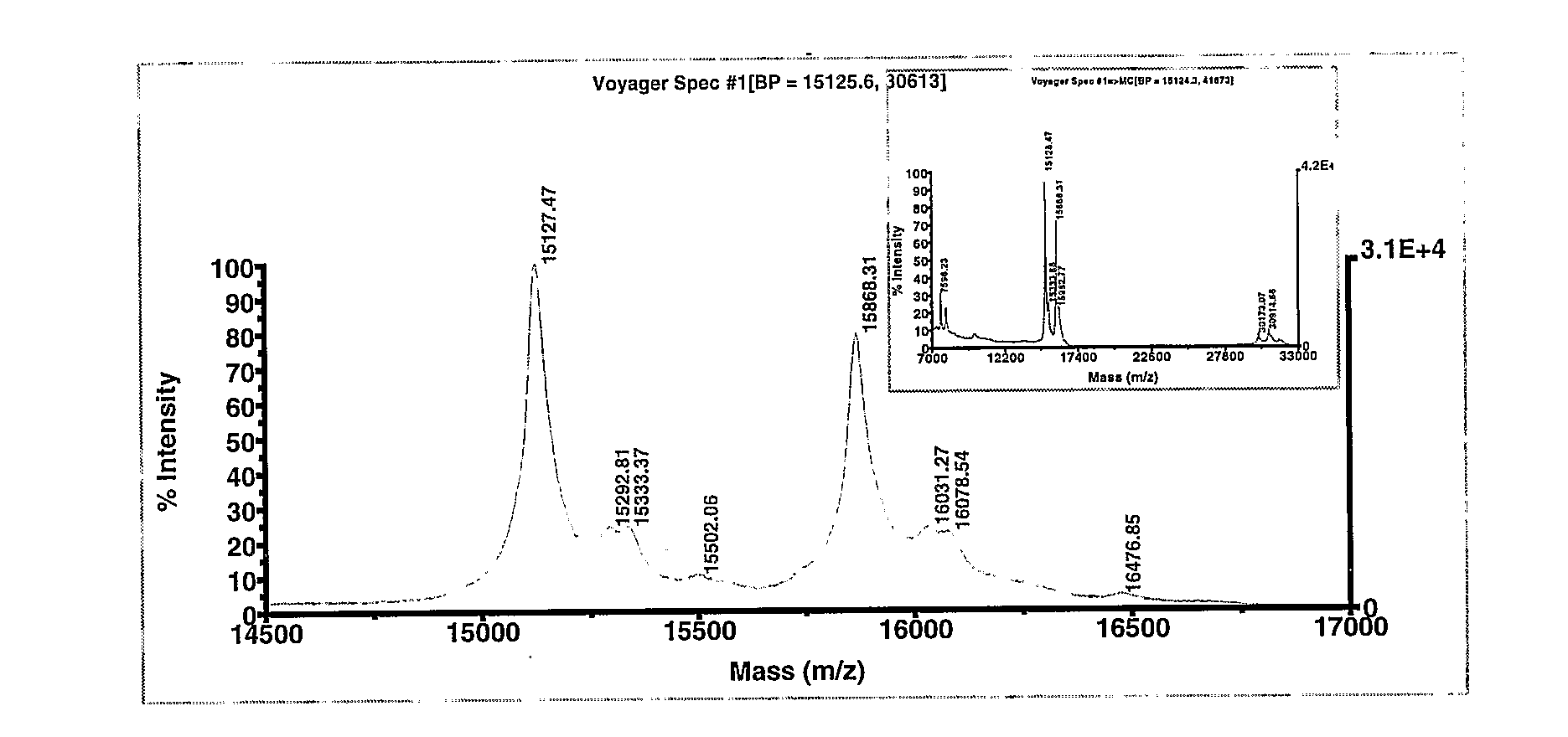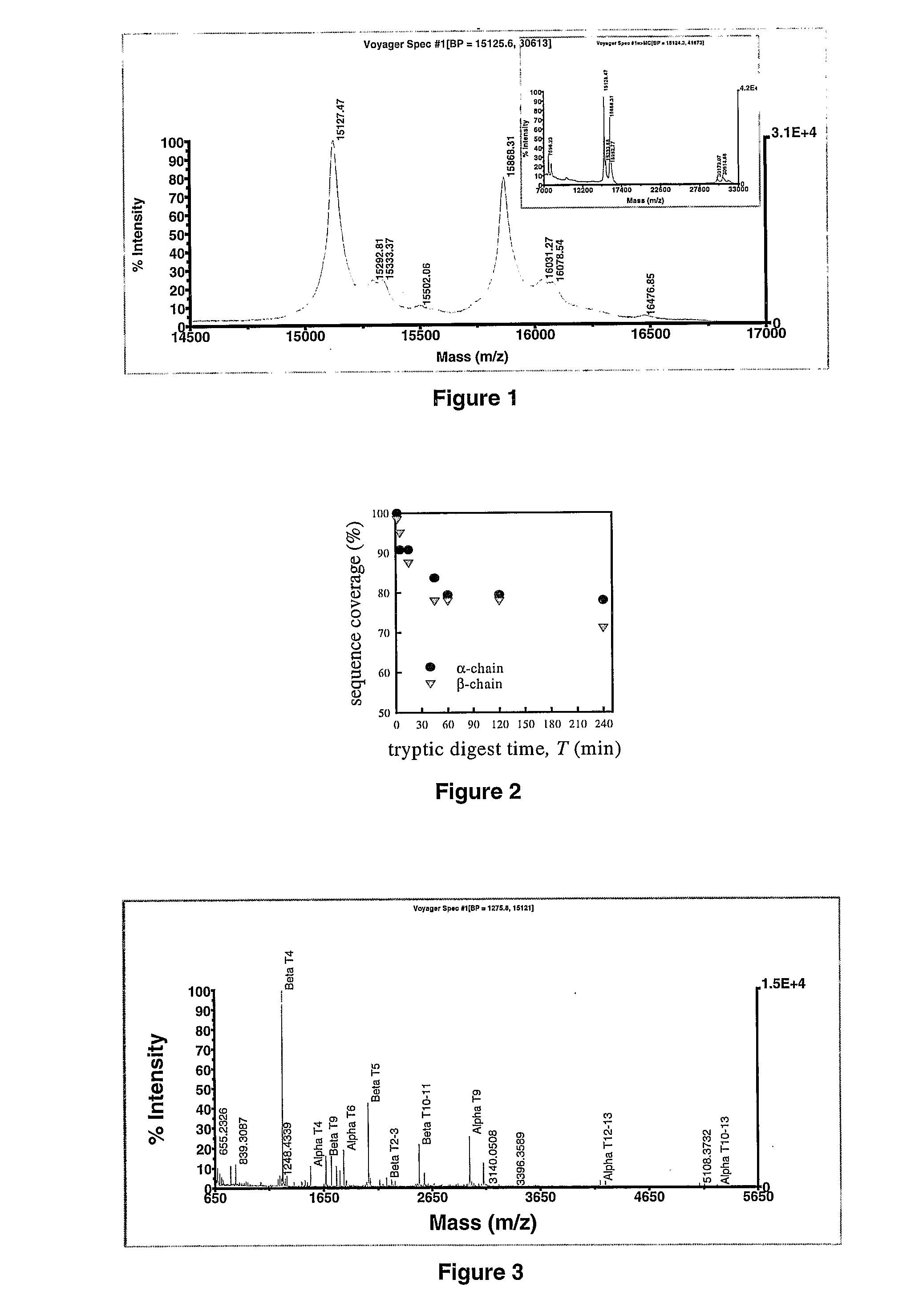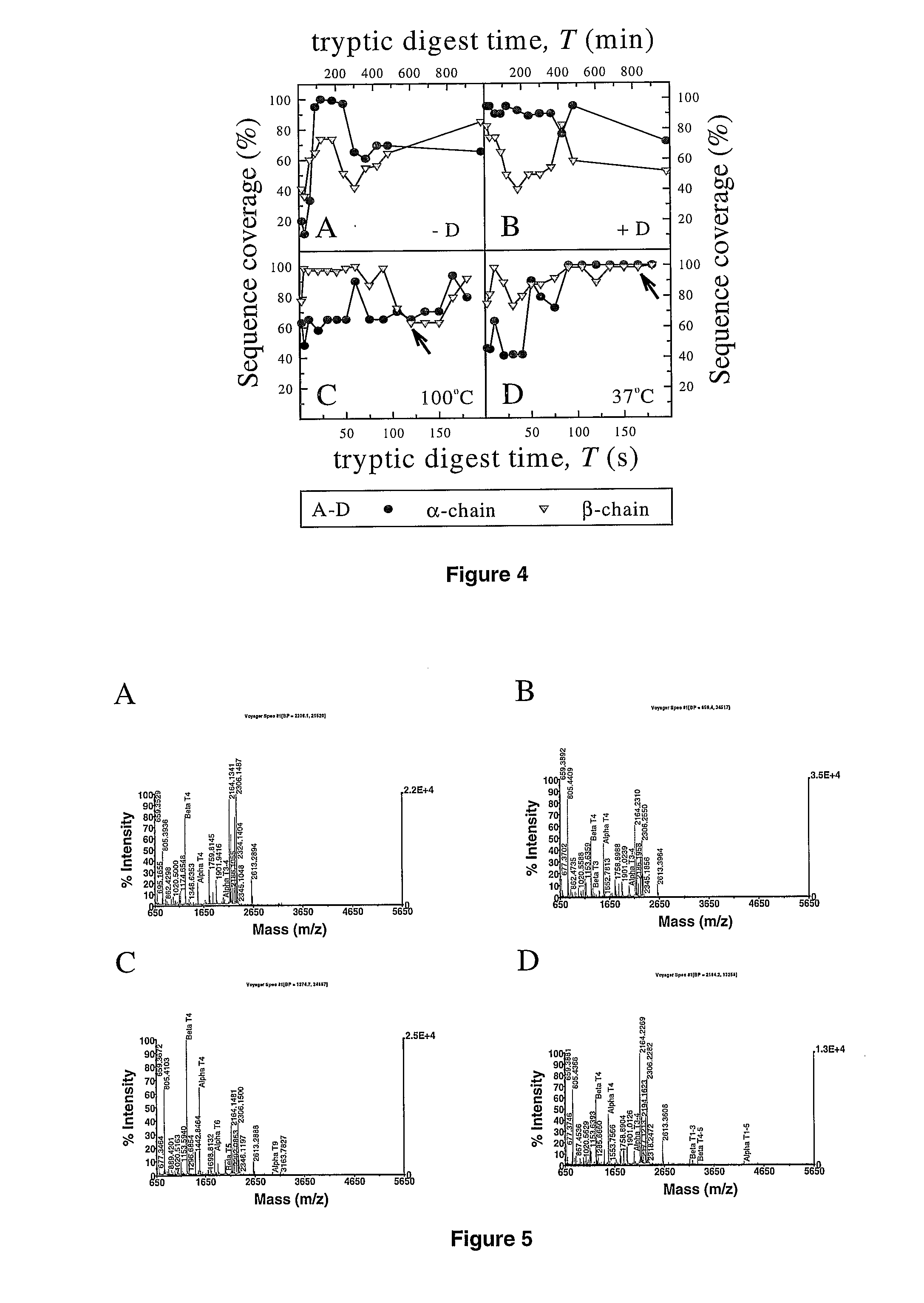Method for the Rapid Analysis of Polypeptides
a polypeptide and analysis method technology, applied in the field of sample analysis, can solve the problems of not providing the required sensitivity to accurately distinguish between closely related polypeptides, unable to provide the required sensitivity to accurately distinguish closely related polypeptides, and only providing gross data by analytical techniques
- Summary
- Abstract
- Description
- Claims
- Application Information
AI Technical Summary
Benefits of technology
Problems solved by technology
Method used
Image
Examples
example 1
Investigation of Different Sample Preparation Methods
[0244]Optimal sample preparation is a prerequisite for successful MALDI-ToF mass spectrometric analysis of peptide and protein samples. Variables associated with a good sample preparation to achieve high quality mass spectrometric data have been widely investigated for biological samples. In this invention, the sample preparation typically involves a dilution of whole human blood, which is the first step of the analysis of intact globin chains of haemoglobin [or of the proteolytic digestion products of the globin chains] and was systematically investigated. Anticoagulant EDTA-treated whole blood was used because this sample collection protocol is standard in clinical laboratories. Blood was investigated without any purification, and as such, no electrophoretic or chromatographic sample purification procedure was employed.
[0245]The amount of blood used in this investigation was 1 μl per sample. The samples were diluted and kept at ...
example 2
Proteolytic Digestion Methods
[0260]To find the best digestion conditions for human Hb α and β chains, and to assess the sequence coverage for both the chains and to document their proteolytic fragmentation pattern a time course proteolytic digest experiments on Hb A standard followed by whole EDTA treated diluted blood, normal Hb A and variant Hb E, were performed. Initially, in solution digests were performed followed by on carrier experiments to devise a rapid on carrier proteolytic digestion method with a novel degradable detergent. The optimised on carrier digest method was subsequently tested with some known and unknown variants, and with other proteolytic enzymes.
2.1 Solution Phase Tryptic Digestion
2.1.1 HbA Standard
[0261]To optimise the digestion time and sequence coverage of the globin chains a time course experiment on Hb A standard was performed. 9 ml of the dissolved Hb A standard were incubated in a water bath at 37° C. for 5 minutes before adding 1 ml of a 10-fold tryps...
example 3
MALDI-ToF MS Analysis: Intact Hb a in Whole Blood
Identification of a and β Chains and Their Adducts
Globin Chain Peaks of Human Hb A
[0266]The MALDI-TOF mass spectrum derived in the linear mode in the 5000-25000 m / z range for unpurified whole EDTA treated human blood containing Hb A (α2β2) show the double charged m / z values (received [M+2H]++ / 2: 7596.23 and 7959.33 (expected 7568.19 and 7934.61), the single charged m / z values (received [M+H]+: 15127.47 and 15868.31, expected 15868.23) and the m / z values for the α-,α-,β-β dimers (received [M+H]+: 30173.07, 30914.66 and 31677.26) as shown in Fig. I. The m / z values of the single charged intact chain and β chain of Hb A were measured with an error of 0.10 and 0.08 Dalton respectively. Errors associated with other peaks are listed in Table 8.
TABLE 8Mass accuracy of obtained peaks in the linear mode formonomeric and dimeric globin chains in Dalton.TheoreticalReceivedError inm / z valuesm / z valuesm / z valueDouble charged α7568.197596.233832.04...
PUM
| Property | Measurement | Unit |
|---|---|---|
| mass shift | aaaaa | aaaaa |
| delay time | aaaaa | aaaaa |
| mass difference | aaaaa | aaaaa |
Abstract
Description
Claims
Application Information
 Login to View More
Login to View More - R&D
- Intellectual Property
- Life Sciences
- Materials
- Tech Scout
- Unparalleled Data Quality
- Higher Quality Content
- 60% Fewer Hallucinations
Browse by: Latest US Patents, China's latest patents, Technical Efficacy Thesaurus, Application Domain, Technology Topic, Popular Technical Reports.
© 2025 PatSnap. All rights reserved.Legal|Privacy policy|Modern Slavery Act Transparency Statement|Sitemap|About US| Contact US: help@patsnap.com



